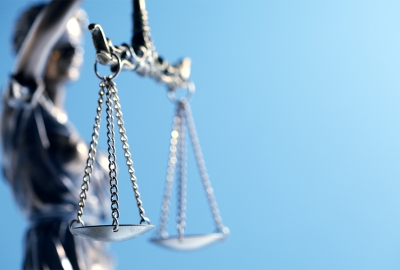How Long Does a Lawsuit Take?
When a client has asserted a claim against someone and we are unable to negotiate a voluntary resolution, we have to start thinking about plan B—filing a lawsuit to vindicate the client’s rights. Invariably, the client’s first questions are: how much will it cost, and how long will it take? The answer to the first question can vary enormously, but most clients are not terribly surprised to hear that it is usually a large number. However many people are surprised at the answer to the second question.
This one can also vary widely, but my usual answer is that from the date of filing a civil lawsuit, you can probably expect a trial somewhere between two and four years later. The reason is that even in a relatively simple case, a lot needs to happen between the time a case is filed and when it is ready for trial. Below, I will roughly outline some of the key stages of a typical civil lawsuit which all contribute to that timeline.
Preliminary Filings
After the case is filed, the defending party has a period of time to respond to the allegations. They might file a motion arguing that the judge should dismiss the case, or they might file their own claims against our side which we then need to respond to. We might want to file preliminary motions, for example to place liens on the defendant’s assets, so that they’re available to pay any judgment we ultimately recover. We might need to seek emergency relief on matters that cannot wait for trial—for example an injunction stopping a party from using the client’s confidential information or trade secrets.
Any motions will need to be researched, briefed by both sides and argued at a hearing, and then the judge will usually take some time to consider the arguments and write a decision. This process may take weeks or months (though emergency matters can be accelerated), and there might be a number of different rounds of motions during the course of the litigation.
Discovery
Beyond that, the overwhelming bulk of the litigation process will be taken up by the process of “discovery.” That means each party requesting documents and information from the other party or parties, and from outside witnesses, to develop the evidence they need to prove their case. Usually, there will be some sparring over what documents and information each party is entitled to, and that may lead to more motion practice as discussed above. Discovery also includes depositions, where the attorneys have the opportunity to question the parties and other witnesses to find out what they know and how they will testify at trial.
Settlement Discussions
As the evidence is developed in discovery, and as the court issues rulings on the preliminary matters put before it, the parties will usually get a better sense of the strengths and weaknesses of their cases. Even if the dispute could not be resolved initially, the parties’ interest in settlement (and the amount that they are willing to pay or accept to settle) will often change during the course of the lawsuit. There may be one or more rounds of settlement proposals and discussions, or the parties may choose to engage a neutral mediator to help them reach a compromise. The vast majority of cases settle before trial, precisely because the discovery process helps the parties clarify their positions and evaluate the risks, benefits and costs of continuing to litigate.
Pre-Trial Process
If the parties cannot settle, or if one party cannot get the other’s claims dismissed on legal or procedural grounds, then the case heads toward trial. The pre-trial process will include one or more hearings to tee up the issues to be tried and determine what evidence each party is entitled to present. And of course, the trial needs to be scheduled, working around the court’s busy calendar. Depending on the particular court and session, it is not at all unusual to find that the court’s next available trial date is 6-12 months out from when the parties believe the case is otherwise ready for trial.
Conclusion
Overall, the decision to file a lawsuit sets in motion a long and arduous process. The above does not cover all, or even most, of the complexities and strategic choices that may arise along the way. The particular circumstances of a given case can make it take even longer than my rough estimated timeline above (sometimes seemingly to the point of absurdity, as astutely satirized by Charles Dickens and others).
But if the case needs to be tried, eventually it will end up before a judge and (depending on the case) a jury. For those of us who love the drama and showmanship of the courtroom, that’s where a whole new kind of fun begins—but that’s a matter for another article.
Disclaimer: This summary is provided for educational and informational purposes only and is not legal advice. Any specific questions about these topics should be directed to attorney David Glod.
© 2023 by Rich May, P.C. and David Glod, Esq. All rights reserved.


